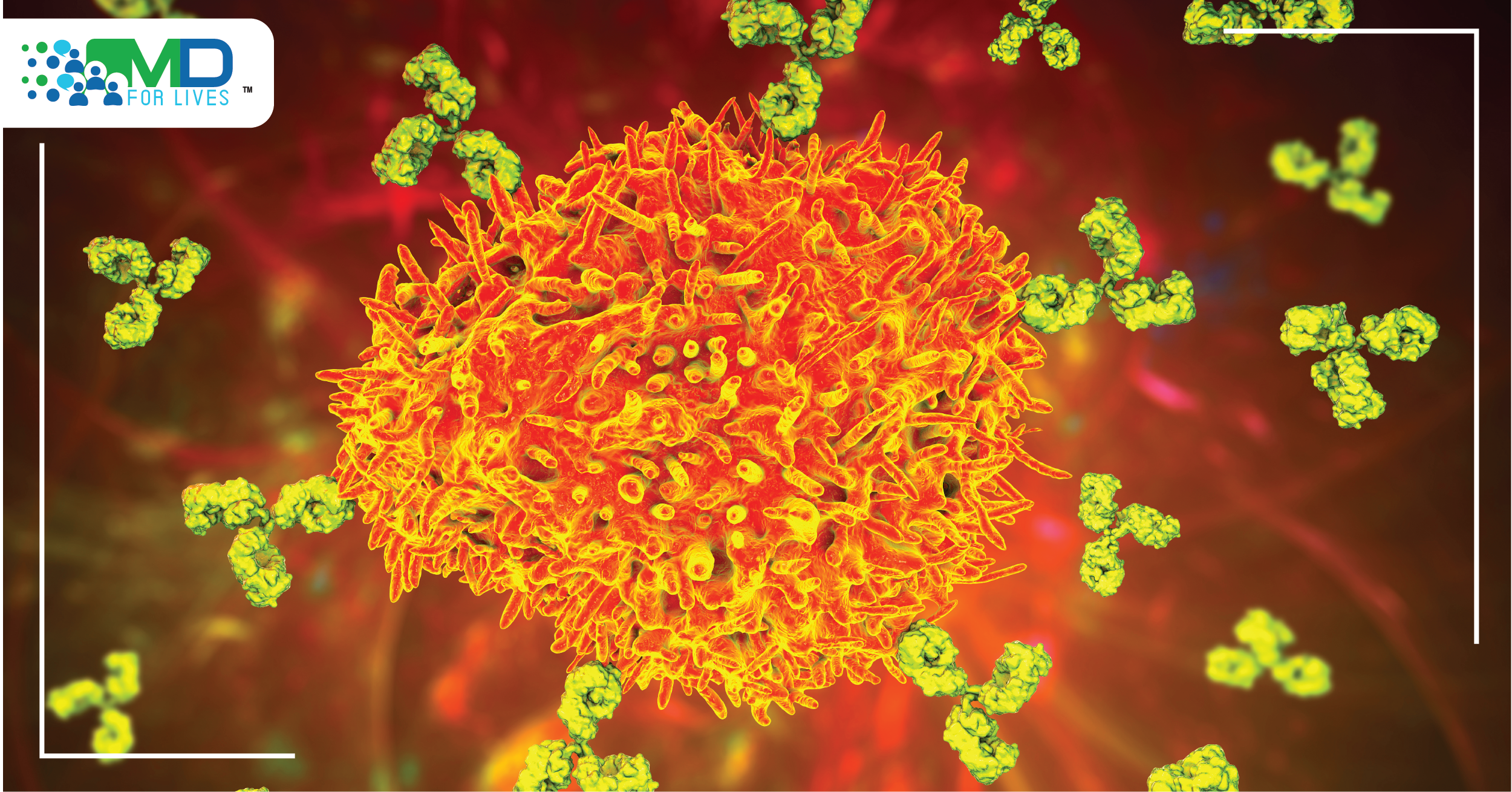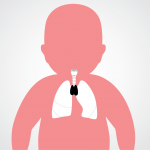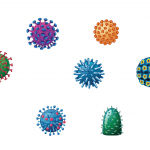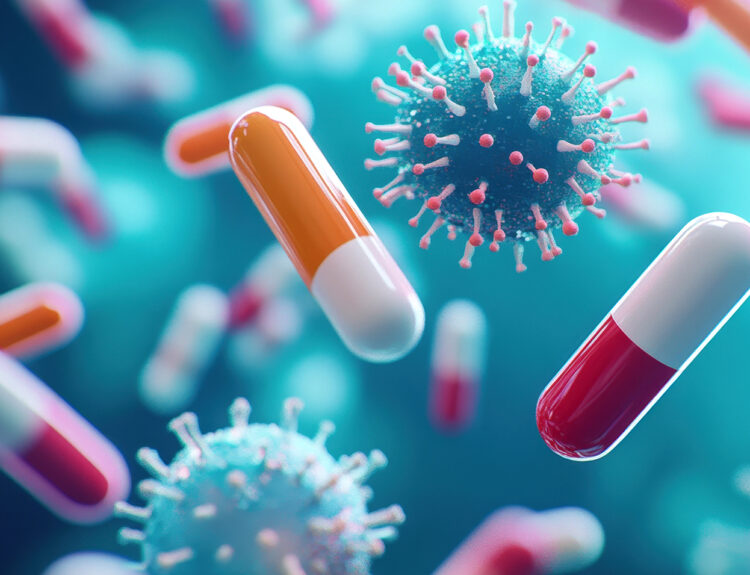AL amyloidosis causes devastating symptoms and typically carries a poor prognosis, with a high risk of organ damage and 30% of patients dying within the first year after diagnosis.1,2 The disease is also difficult to treat.3,4 Before 2021, there were no FDA-approved medications specifically for the condition.
Based on positive results from a phase 3 clinical trial (ANDROMEDA), the monoclonal antibody daratumumab was approved in January 2021 for use in combination with bortezomib, cyclophosphamide, and dexamethasone to treat newly diagnosed AL amyloidosis. 1,2,5 Now, with the publication of the ANDROMEDA trial results, doctors will have more information and tools than ever to treat AL amyloidosis.
What is amyloidosis?

Amyloidosis is a group of rare diseases characterized by abnormal deposition of proteins in the body.6,7,8 Protein aggregation caused by misfolding of the protein — which occurs as a consequence of aging, gene mutation, or a high serum concentration of precursor proteins —leads to the deposition of insoluble fibrils in and around tissues and organs. The buildup of these amyloid fibrils causes tissue damage and organ failure.6,7,8
The type of amyloidosis is named depending on the protein that is deposited as amyloid; important types include amyloid immunoglobulin light chain (AL) amyloidosis, serum amyloid A protein (AA) amyloidosis, amyloid transthyretin (ATTR) amyloidosis, and dialysis-related beta2-microglobulin amyloidosis.4,6,7,8
AL amyloidosis
AL amyloidosis (also known as light chain amyloidosis) is the most common type of amyloidosis in the United States, where it is diagnosed in roughly 4500 people each year.2,4,8,9 In AL amyloidosis, abnormal plasma cells in the bone marrow — specifically, CD38+ cells — produce an excess of immunoglobulin light chains. The light chains then misfold and form amyloid deposits.1,8,10

AL amyloidosis symptoms
The kidneys, heart, nervous system, liver, gastrointestinal system, and skin are the most commonly affected organs in AL amyloidosis.8,11 Different organ involvement leads to a wide range of AL amyloidosis symptoms that can differ between patients based on where amyloid deposition is occurring and to what extent the deposits have damaged tissues and organs.8,11
When the heart is involved, patients have significantly lower chances of survival.4,6 Amyloid deposits in the heart can cause thickening of the ventricular walls and heart failure; arrhythmias can also result.4,8,11 Deposition in the kidneys can cause nephrotic syndrome and eventually kidney failure.4,8,11
Patients may develop peripheral neuropathy, with tingling sensations in the extremities, numbness, loss of motor function, and occasionally pain, if deposition in the nerves occur.8,11 Hepatomegaly (enlarged liver), gastrointestinal changes, macroglossia (enlarged tongue), and purpura (bruising), especially around the eyes, can also develop. 4,8,11
Early diagnosis is critical for patients’ survival. Unfortunately, diagnosis is often delayed, which means many patients already have organ damage when they begin treatment.1,2,8
AL amyloidosis treatment
Treatment of AL amyloidosis involves supportive treatment (such as treatment for kidney failure and heart failure) and chemotherapy intended to reduce the underlying overproduction of light chains.8,12
Due to the similarities between the two diseases, chemotherapeutic agents used to treat multiple myeloma can also be used to treat AL amyloidosis in some cases. Combination therapy of bortezomib, cyclophosphamide, and dexamethasone is used frequently.1,8,12 Stem cell transplantation is another potentially successful treatment option, but only limited patients are good candidates for the procedure.4,6,8,12
Daratumumab for AL amyloidosis treatment
Daratumumab, an anti-CD38 monoclonal antibody, was previously approved for multiple myeloma.1,2 In January 2021, the FDA approved a treatment regimen for newly diagnosed AL amyloidosis, including subcutaneous daratumumab and the three-drug combination known as VCD (bortezomib, cyclophosphamide, and dexamethasone).1,2,12

The safety and efficacy of the new therapy were evaluated in the phase 3 ANDROMEDA trial. The results were published in The New England Journal of Medicine in July 2021.1
In this open-label, active-controlled trial, 388 patients with newly diagnosed AL amyloidosis were randomly assigned to the daratumumab-plus-VCD group or the control group (received VCD without daratumumab).1 The primary endpoint was a hematologic complete response, which investigators defined as a free light chain level within the normal range.1,5
At 6 months, more patients in the daratumumab group than in the control group had a hematologic complete response (53.3% vs. 18.1%, respectively; P<0.001).1 Another endpoint that investigators looked at was survival free from major organ deterioration or hematologic progression, and it was long in the daratumumab group than in the control group (hazard ratio, 0.58; p=0.02).1
The adverse events in the trial were consistent with what investigators expected based on experience with these drugs.1,5 More patients in the daratumumab group had serious adverse events (43.0% vs 36.2% in the control group). Apparent daratumumab side effects included upper respiratory tract infections, neutropenia, and pneumonia. 1,5
References
- https://www.nejm.org/doi/pdf/10.1056/NEJMoa2028631?articleTools=true
- https://www.medscape.com/viewarticle/944380
- https://medicalxpress.com/news/2020-01-anti-cancer-drug-safe-effective-chain.html
- https://ashpublications.org/blood/article/136/23/2620/474251/Management-of-AL-amyloidosis-in-2020
- https://www.onclive.com/view/d-vcd-rises-as-the-new-standard-of-care-in-newly-diagnosed-al-amyloidosis
- https://www.ncbi.nlm.nih.gov/books/NBK470285/?report=reader
- https://amyloidosis.org/facts/
- https://rarediseases.org/rare-diseases/amyloidosis/
- https://amyloidosis.org/facts/al/
- https://www.researchgate.net/publication/326757261_Immunoglobulin_light_chain_amyloid_aggregation
- https://amyloidosis.org/facts/al/#symptoms
- https://amyloidosis.org/facts/al/#treatment






